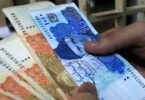GAZIANTEP (AA): Turkey aims to revive agriculture and livestock breeding in Syrian cities liberated from terrorists by the Turkish military-led operation.
In Jarablus and Al-Bab, Turkish officials vaccinated animals and trained farmers for pesticides and selling products, Mehmet Karayilan, the director of Food and Agriculture in Turkey’s southern province Gaziantep, told Anadolu Agency.
Jarablus and Al-Bab were liberated from Daesh terrorists by Turkey’s Operation Euphrates Shield launched in September 2016. The operation, which concluded in March 2017, was meant to clear terrorists from areas of Syria bordering Turkey.
Since the region is cleared of the terrorists, Turkey has been supporting normalization in Jarablus and Al-Bab with 2 million Turkish liras (nearly $500,000) so far by supporting healthcare, education, banking and safety services for locals.
He said that barley, wheat, lentil, chickpea, cummin, pistachio, olive and almond were produced in nearly 900,000 decares area (222,395 acres) in Jarablus and Al-Bab.
“5 veterinarians have vaccinated 11,555 small cattle and 2,781 bovines for foot-and-mouth diseases, and 10,425 sheep and goats for plague in Jarablus,” he said.
He added that there were 95,000 small cattle and 2,500 bovines just in Al-Bab and nearly all of them were vaccinated by Turkish officials.
He stressed that Turkey’s Food, Agriculture and Livestock Ministry provided manure, seeds and saplings, chickens and chicken feed, pesticides and agricultural tools for developing the region.
Turkey also bought tons of wheat, barley chickpea and lentil from this region and made payment worth nearly 6 million liras ($1.5 million), he stated.
“The ministry has begun to build an agricultural facility in Jarablus for providing better support,” Karayilan said.
Turkey also provided beehives in the region, while demonstrations performed on growing new agricultural products, he added.
He underlined that many people moved to Al-Bab after the recovery works in the region, increasing the estimated population to 100,000 from 5,000.






